#load tracking software
Explore tagged Tumblr posts
Text
Efficient Vehicle Tracking Solutions for Fleet Management
iTruck Dispatch offers cutting-edge vehicle tracking technology to streamline fleet management. With real-time GPS tracking, dispatchers can monitor vehicle locations, optimize routes, and ensure timely deliveries. The platform enhances operational efficiency, reduces risks like theft, and provides accurate data on vehicle status and estimated arrival times. Integrated with other fleet management features, iTruck Dispatch ensures businesses can improve logistics, boost productivity, and maintain seamless communication with drivers, all through an easy-to-use interface. This comprehensive solution is ideal for businesses aiming to enhance fleet visibility and operational control.

#tracking app#load management#dispatch software#carrier tracking#dispatch solutions#load tracking app#load tracking software
0 notes
Text
Revolutionizing Logistics: The Strategic Integration of BPO Services
In the fast-paced world of logistics, companies are increasingly turning to Business Process Outsourcing (BPO) services to navigate challenges, streamline operations, and foster sustained growth. This blog explores the how and whys behind the utilization of BPO services in the logistics sector.

Unpacking the Dynamics of Logistics Business Process Outsourcing
1. Enhancing Operational Efficiency
At the core of Logistics Business Process Outsourcing lies a commitment to enhancing operational efficiency. Logistics companies leverage BPO services to streamline intricate processes, from order management to inventory control. This strategic move allows these companies to focus on their core competencies while experts handle the nuances of logistics operations.
2. Optimizing Costs for Scalability
Cost optimization is a driving force behind the adoption of Logistics Business Process Outsourcing. Logistics companies can scale their operations without the burden of significant overhead costs. BPO services offer a cost-effective solution for scalability, allowing businesses to align their resources with the demands of a dynamic market without compromising profitability.
LOGISTICS BACK OFFICE: A Strategic Backbone
1. Efficient Data Management
The LOGISTICS BACK OFFICE becomes a strategic backbone for logistics companies, especially in terms of efficient data management. BPO services specialize in handling vast amounts of data, ensuring accuracy, compliance, and timely reporting. This data-centric approach empowers logistics companies with actionable insights for informed decision-making.
2. Navigating Regulatory Compliance
Logistics Back Office Services play a pivotal role in navigating the complex web of regulatory compliance. From customs documentation to adherence to international shipping standards, BPO services ensure that logistics companies operate within the bounds of regulations. This meticulous approach minimizes risks and positions businesses for global success.
The Strategic Integration of Logistics Back Office Services
1. Harnessing Technological Advancements
The utilization of Logistics Back Office Services is synonymous with harnessing technological advancements. BPO providers leverage state-of-the-art technologies, including automation and analytics, to optimize logistics processes. This tech-savvy integration ensures precision, speed, and adaptability in the face of evolving market demands.
2. Strategic Focus on Core Competencies
The strategic integration of Logistics Back Office Services allows logistics companies to maintain a laser focus on core competencies. Whether it's refining supply chain strategies, optimizing transportation routes, or enhancing customer experiences, BPO services become the operational backbone that handles non-core functions with unparalleled expertise.
Conclusion: Redefining Logistics Excellence
In conclusion, Logistics Business Process Outsourcing, especially through the utilization of LOGISTICS BACK OFFICE Services, emerges as a transformative strategy for logistics companies. By enhancing efficiency, optimizing costs, and strategically integrating back-office support, businesses redefine logistics excellence in a competitive landscape.
As logistics companies embrace the symbiotic relationship with BPO services, they not only navigate operational challenges but also position themselves as agile, tech-driven, and poised for sustained growth. The strategic integration of Logistics Back Office Services is not merely a trend; it's a paradigm shift that propels logistics companies toward a future defined by operational excellence and global competitiveness.
#Logistics Business Process Outsourcing#LOGISTICS BACK OFFICE#Logistics Back Office Services#logistics bpo services#transportation back office#track and trace shipment#TRACK AND TRACE MONITORING#claim processing outsourcing#saas transportation management system#command logistics services#Trucking Dispatch Companies#Bpo services#Support center#Support ticket system#Live chat support#Online support#Customer support software#Healthcare bpo#Healthcare business process outsourcing#load board outsourcing#end to end supply chain#Data entry outsourcing#Business process outsourcing companies#Customer support outsourcing#claim managament#Bpo solutions#Customer support solutions
0 notes
Text
Axle weights, distribution and their configuration
It is of foremost importance to mention that Eagle-IoT offers axle load monitoring solution for various axle arrangements with diverse axle configurations under the license of the Transport General Authority (TGA) and connects your trucks and trailer to the WASL portal where the operation card is issued. As we all know, an operation card is essential in KSA for your heavy vehicle transport to haul loads on roads. Some of the configurations are mentioned below: To read more about axle load monitoring solution
#fleet maintenance#fleet management#tracking software#fleet maintenance services#axle load monitoring
0 notes
Text
USEFUL SOFTWARE FOR THE SIMS 2

This is a list of programs that will make your life easier if you're an avid Sims 2 player. Click on program titles to get download links.
SimPE The most known software for The Sims 2 that lets you edit package files. You can do basic stuff like rename a Sim, change family name, edit Sims' genetics as well as edit/create mods. Don't use if you have no idea what you're doing, watch a tutorial first or back up your neighborhood beforehand in case you mess something up! The newest version also has a terrain editor.
Sims2Pack Clean Installer The best program for installing downloaded lots and Sims. Those don't just go into Downloads, you need to install them!
Hood Checker This program checks neighborhood references and can clean out ones that are broken. Also useful for bringing back lost graves (it's still good to have NoUnlinkOnDelete).
HCDU Plus The Hack Conflict Detector Utility lets you scan your Downloads folder to check if you have any mods that edit the same aspect of the game, so can potentially be in conflict. Also useful to navigate which mods load first (load order is important for some mods to work).
What Caused This When you have 'testingcheats' on, the game gives you error messages if there's something going on. Not all of them mean there's a serious problem, but What Caused This can help you navigate what the source is. Upload the log file (Documents/EA/TS2/Logs) in the program, give it your Downloads folder and it will scan it to look for the culprit. Might give you straighforward information on which mod conflict caused the issue or that you lack Smarter EP Check for a mod that requires it.
The Compressorizer You can compress your Downloads to take up less space.
Delphy's Download Organiser You can filter your files to a certain category, scan for orphans (files that don't fully work if other files are missing, such as meshes), duplicates, and clean up your Downloads folder in an easier way than trying to track it inside the folder manually.
Outfit Organiser You downloaded CC clothes that the creator marked as outerwear but you think they don't fit in that category? With this program you can quickly change that! It's also doable in SimPE, but Outfit Organiser is a lot easier to use.
CPack Editor If you want to make plastic surgery genetic, there's no need to do it manually in SimPE, especially if it's more than one Sim. In CPack Editor, you just choose your neighborhood's folder, run the program, and it changes ALL surgery faces in that neighborhood to genetic!
Lot Adjuster This program lets you edit already existing lots. If you want a smaller or bigger lot than possible in-game, you can do it here! Also great for creating pavilions or row houses that are all separate lots, as you can get rid of the 2-tile border separating buildings by making the lots smaller and copying them.
790 notes
·
View notes
Text
[xxxx--------------------] 4/24 episodes complete
What's Deutsche Meshi?
Deutsche Meshi is an in-progress edit of Dungeon Meshi where everything's the same except Marcille is German.
Didn't someone already do that?
While this has been done with clips, to my knowledge there is no available edit of the entire series.
Why are you doing it?
I don't watch anime, speak German or know how to use video editing software so it's a fun challenge and I'm learning a lot. Also a woman requested it.
How are you doing it?
I load the video and both dubs into DaVinci Resolve and place markers wherever Marcille starts or finishes talking. I then mute and unmute the tracks using automation, producing a single audio track.
So all you're doing is manually adjusting audio tracks over and over for hours?
Yes.
...But why German? (from valkylander in the replies)
While the original idea wasn't mine, one of the reasons I chose to pick it up is because I like it. There's a nasty stereotype in English-language media of German being strictly masculine and inelegant, and it's nice to see a widely-loved female protagonist speaking it for a change. It's also close enough to English that a non-German speaker can roughly parse meaning by following context clues. Finally, a woman asked if someone could make this edit and I am a feminist.
Are you uploading it here?
For legal reasons, no. This blog is more of a running commentary where I'll also be posting one or two clips whenever I finish an episode.
Where can I watch it then?
Right now, nowhere. This may be subject to change once the series is done or, alternatively, when I get bored of doing it.
Wait a minute I think I know who runs this blog.
No you don't. Pervert.
134 notes
·
View notes
Text
One of the software concepts that I found useful to bring over to writing is the concept of technical debt.
Technical debt is the additional work that gets created when you choose a fast option over a good option. It's "debt" because there's a very good chance that at some point you're going to have to repay it: you hardcode in some variables, deciding that you'll figure out the proper way to do it later, and eventually, surprise! It's later. You have to implement the solution you were putting off. And because you've been using the kludge for so long, sometimes that kludge has become load-bearing, and you have to spend quite a bit of time unraveling and refactoring. One of the reasons it's called debt is because you have to pay interest on it.
And the thing is, it's not always wrong to accrue technical debt. Sometimes it helps you get to working on the important thing, and can clarify design details or implementation concerns, and sometimes you can just ship without ever having to do it the "right" way. Sometimes you can wriggle out from under that debt and never suffer any consequences from it, even if there were theoretical consequences when you made the decision to do it the fast way.
The way that this applies to writing is mostly in terms of worldbuilding, character building, and plotting. You can sit down and map a whole novel out without writing a single word, whipping up character bibles and setting details and everything that you might possibly need, all before you write a single word.
... or you can accrue some debt and just gun it, writing as you go, making things up, adding them to some kind of tracking document or just not even doing that.
And as with code, there will come times you have to pay that debt back with interest.
Sometimes you skimp on a character's backstory, and then a few chapters down the road you need to make a decision about it, and suddenly there's a bunch of editorial work as you have to make sure that everything you just decided on matches up with what you've already written. A more extreme example would be writing a mystery novel where you haven't decided on what the answer to the mystery will be until very very late: it would either produce a bad mystery or require tons of rewriting.
As with code, the difficulty is knowing when you're incurring technical debt for a good reason and when you're shooting your future self in the foot.
Here are my rules of thumb for writing, in terms of what's acceptable technical debt:
Plot stuff should not wait. You should have a resolution for your story within the first few chapters of writing that story, and ideally, before you even start.
Everyone (and everything) gets a name the first time it appears. You cannot say "the gardener" a dozen times because you don't want to think of a name for the gardener.
All magic systems and superpowers and whatnot should be rigidly defined before they come onscreen. This doesn't need to be known to the characters, and "soft" magic has less of a requirement, but having rules be thought up midway through a fight scene is essentially the definition of generating technical debt.
Descriptions take little effort to bring into alignment, so can be skipped on first draft, so long as there is a description there. Having descriptions written afterward can help to understand mood and requirements of the scene.
Backstory is really variable, depending on how relevant to the plot it is. If it's going to be driving conflict, it needs to be worked out ahead of time. If it's flavor, it can be winged.
I am, of course, not the best follower of my own advice, and sometimes for very long webfic it's impossible to plan that much in advance. And of course I never go into every work having had every idea I'm going to have, and some of those ideas are good enough to include even if they disrupt a plan and require some refactoring.
264 notes
·
View notes
Text
YouTube says it will intentionally cripple the playback of its videos in third-party apps that block its ads. A Monday post in YouTube's help forum notes netizens using applications that strip out adverts while streaming YouTube videos may encounter playback issues due to buffering or error messages indicating that the content is not available. "We want to emphasize that our terms don’t allow third-party apps to turn off ads because that prevents the creator from being rewarded for viewership, and Ads on YouTube help support creators and let billions of people around the world use the streaming service," said a YouTube team member identified as Rob. "We also understand that some people prefer an entirely ad-free experience, which is why we offer YouTube Premium." This crackdown is coming at the API level, as these outside apps use this interface to access the Google-owned giant's videos. Last year, YouTube acknowledged it was running scripts to detect ad-blocking extensions in web browsers, which ended up interfering with Firefox page loads and prompted a privacy complaint to Ireland's Data Protection Commission. And several months before that, the internet video titan experimented with popup notifications warning YouTube web visitors that ad-blocking software is not allowed. A survey published last month by Ghostery, a maker of software that promotes privacy by blocking ads and tracking scripts, found that Google's efforts to crack down on ad blocking made about half of respondents (49 percent) more willing to use an ad blocker. According to the survey, the majority of Americans now use advert blockers, something recommended by the FBI when conducting internet searches.
Download NewPipe, it's what I use on Android
276 notes
·
View notes
Text
Revolutionize Your Operations with Advanced Dispatch Solutions
iTruckDispatch offers cutting-edge dispatch solutions and dispatch management software to streamline your trucking operations. Our tools enhance efficiency, improve communication, and optimize load management for businesses of all sizes. Whether you’re a small fleet or a large logistics company, our software delivers results. Visit our website to explore how iTruckDispatch can transform your dispatch processes and take your business to the next level. Trust us for innovative solutions that drive success!
#dispatch solutions#dispatch management software#tracking app#fleet management solution#load management#trucking services#load tracking software#load tracking app#dispatch software#carrier tracking
0 notes
Text
Game Fuckery Help and Linux List [Update].

I'm avoiding re-installing this shit again, so in the meantime I'm sorting some stuff into lists. For Linux research purposes.
Edit: Standby Memory Allocation on Windows 10: New info coming in: That's not the issue. However, what i wrote below about TM is my own experience and has worked for me (without doing what Jessa was saying in the SB memory part, I remembered, hope I didn't waste anybody's time). Does it make sense? idk, but it's harmless, and if it's actually a thing and not just a freak coincidence, and can help anybody else then why not. I do remember trying it with and without cleaning cache :/ [for fuck sake the nerve on EA to put out for sale a new edition without improving it to 64bit]. As discussed by Jessa below, it's an OS problem. What worked for me, for some bizarre reason was to keep Task Manager on before and while playing the game. without it my game was crashing often, on my main non gaming computer. What solved it was fixing windows... for anyone's interested, the gory details are at the bottom of the post under the cut.
+ That combined with clearing cache often.
Jessa's video (Memory Allocation and 4GB Patch Repair). Edit: Turns out this video was pulled back, so basically just make sure the patch is applied?
1. Secound opinion on the whole matter by BrandiNotBroke [the whole #pink flash diaries tag is interesting]:
2. Leefish forum - Sims2 Graphic Cards:
3. @celebkiriedhel's Post (Texture Memory):
Linux:
@teaaddictyt & @niamh-sims About Linux.
2. @nonsensical-pixels about Linux.
3. @brandinotbroke, first Linux supporter I've encountered here. A comprehensive post:
4. @grilledcheese-aspiration, Transferring software and such from Windows to Linuxs:
Texture Memory Fuckery (Pink Soup, among other things):
Kiri's post linked at the beginning, first an foremost.
Original Post by @fireflowersims, plus; re-blog by @ovytia. Both of their tags, and comment:
2. A recap on Pink Soup/Texture Sizes by @rockethorse in the comments:
That's it for now. Any more information or good links will be welcome.
Task Manager thing briefly, for the curious (as if it interests anyone else but me, but in the interest of keeping track).
So the game was crashing often. That thing was easy to spot because the laptop would make loud airplane noises when I'd load the game. It got stuck or something, so I went to end it by force with task manager and noticed that all the resources where used to the max - right up until I'd open TM, and then everything would cool down. Like it was playing hide and seek with me. So I figured I'd get smart with it right back, and just leave TM open the whole time. Low and behold, the game stopped crashing. That combined with clearing cache often. Does it make sense? idk, but the computer works in mysterious ways.
#ts2#Sims2#theSims2#the Sims 2#Sims 2#Tutorial#ts2 tutorial#sims 2 tutorial#tagging is a bitch#the sims 2 tutorial#Crashing#Pink Flashing#Pink Soup#Linux#Sims 2 Linux#Windows 10#Graphics Help#Texture Memory#Standby Memory#Youtube#Standby Memory Allocation Windows 10#EA#Somewhat of a#Shitpost#text post#Tutorial: Other#Tutorial: Help
22 notes
·
View notes
Text
This month, Andrew Bernier, a US Army Corps of Engineers researcher and a union leader, says that he has received a barrage of menacing messages from the same anonymous email account. Unfolding like short chapters in a dystopian novel, they have spoken of the genius of Elon Musk, referenced the power of the billionaire’s so-called Department of Government Efficiency (DOGE), and foretold the downfall of “corrupt” union bosses.
But the most eerie thing about the emails, which Bernier says began arriving after he filed an official charge accusing the Trump administration of violating his union’s collective bargaining agreement, is that they included personal details about his life—some of which he believes might have come from surveillance of his work laptop. The author referenced Bernier’s union activities, nickname, job, travel details, and even the green notebook he regularly uses. The most recent email implied that his computer was loaded with spyware. “Andy's crusade, like so many before it, had been doomed from the start,” one email stated. “The real tragedy wasn't his failure—it was his belief that the fight had ever been real.”
The unsettling messages, which were reviewed by WIRED, are an extreme example of the kinds of encounters that workers across the US government say they have had with technology since President Donald Trump took office. WIRED spoke to current employees at 13 federal agencies for this story who expressed fears about potentially being monitored by software programs, some of which they described as unfamiliar. Others said that routine software updates and notifications, perhaps once readily glossed over, have taken on ominous new meanings. Several reported feeling anxious and hyperaware of the devices and technology around them.
At the General Services Administration (GSA), one worker cited a Chrome browser extension called Dynatrace, an existing program for monitoring app performance. Inside the Social Security Administration (SSA), another employee pointed to Splunk, a longstanding tool that’s used to alert IT staff to security anomalies like when an unauthorized USB drive is plugged into a laptop. At the US Agency for International Development (USAID), one worker was caught off guard by Google’s Gemini AI chatbot, installations of which kicked off days before Trump took office.
“Everyone has been talking about whether our laptops are now able to listen to our conversations and track what we do,” says a current GSA employee, who like other workers in this story, was granted anonymity because they didn’t have authorization to speak and feared retaliation.
Dynatrace and Splunk did not respond to requests for comment from WIRED.
The workers’ accounts come as Musk’s DOGE organization is rapidly burrowing into various government agencies and departments, often gaining access to personnel records, logs of financial transactions, and other sensitive information in the process. The efforts are part of the Trump administration’s broader plan to terminate thousands of government employees and remake the face of federal agencies.
Like many private companies, US federal agencies disclose to staff that they have tools to monitor what workers do on their computers and networks. The US government’s capabilities in this area have also expanded over the past decade.
It couldn’t be learned whether the Trump administration has begun using existing tools to monitor employees in new ways; multiple agencies, including the Social Security Administration and the General Services Administration, denied that they have. The White House did not respond to requests for comment. Public evidence has not emerged of new government purchases of user-monitoring software, which is generally needed for detailed surveillance such as tracking which files a worker has copied onto a thumb drive. Some of the updates and changes that have been noticed by federal workers date back to software purchases and plans enacted long before Trump was in power, WIRED reporting shows.
“I will say my concerns are primarily based in general fear as opposed to specific knowledge,” says a worker at the Department of Homeland Security, who adds: “I’d love to be told I’m wrong.”
But activity that some workers perceive as signs of increased surveillance has prompted them to take precautions. Bernier, who works as a civil engineer for the Army Corps based in Hanover, New Hampshire, says the messages he received spooked him enough that he asked local police to keep an eye on his home, removed the battery from his work-issued laptop, and kept his work phone on airplane mode while traveling to a non-work conference last week. “There are things I don’t control but actions I can take to protect myself and my family,” he says.
Bernier’s anonymous emailer and the Army Corps did not respond to requests for comment.
A person inside the Environmental Protection Agency told WIRED last week that they’ve witnessed coworkers back out of Microsoft Teams meetings, which can be easily recorded and automatically transcribed, when they are related to topics they believe could get them fired. “Definite chilling effect,” the person says. The EPA did not respond to a request for comment.
An employee at the National Oceanic and Atmospheric Administration (NOAA), whose work with international partners is being audited by DOGE operatives, says they and their colleagues began avoiding messaging one another and have “really cut down on putting things in writing” in recent weeks. They report that correspondence from their supervisors has also significantly dropped off. NOAA declined to comment.
At the Federal Bureau of Investigation, anxiety around officials possibly targeting officers and activities perceived as being disloyal to the president has cratered morale, a federal law enforcement source with knowledge of the agents' concerns tells WIRED. The FBI declined to comment.
Aryani Ong, a civil rights activist and cofounder of Asian American Federal Employees for Nondiscrimination, a group that advocates for government workers, says those she’s been in contact with are in a heightened state of alert. In response, some federal employees have turned to encrypted communications apps to connect with colleagues and taken steps to anonymize their social media accounts, Ong says. (Federal workers are granted an allowance to use non-official communication tools only “in exceptional circumstances.”)
Insider Threat
Long before Trump’s inauguration, user activity monitoring was already mandated for federal agencies and networks that handle classified information—the result of an executive order signed by then-president Barack Obama in the wake of a massive breach of classified diplomatic cables and information about the wars in Iraq and Afghanistan in 2010. The capability is part of government-wide insider threat (InTh) programs that greatly expanded after Edward Snowden’s leak of classified surveillance documents in 2013, and again after an Army specialist murdered four colleagues and injured 16 others at Fort Hood in 2014.
The US government’s current approach to digitally monitoring federal workers has largely been guided by a directive issued by the Committee on National Security Systems in 2014, which orders relevant agencies to tie user activity to “specific users.” The public portions of the document call for “every executive branch department and agency” handling classified information to have capabilities to take screenshots, capture keystrokes, and intercept chats and email on employee devices. They are also instructed to deploy “file shadowing,” meaning secretly producing facsimiles of every file a user edits or opens.
The insider threat programs at departments such as Health and Human Services, Transportation, and Veterans Affairs, also have policies that protect unclassified government information, which enable them to monitor employees’ clicks and communications, according to notices in the Federal Register, an official source of rulemaking documents. Policies for the Department of the Interior, the Internal Revenue Service, and the Federal Deposit Insurance Corporate (FDIC), also allow collecting and assessing employees’ social media content.
These internal agency programs, overseen by a national task force led by the attorney general and director of national intelligence, aim to identify behaviors that may indicate the heightened risk of not only leaks and workplace violence, but also the “loss” or "degradation" of a federal agency’s “resources or capabilities.” Over 60 percent of insider threat incidents in the federal sector involve fraud, such as stealing money or taking someone's personal information, and are non-espionage related, according to analysis by Carnegie Mellon researchers.
“Fraud,” “disgruntlement,” “ideological challenges,” “moral outrage,” or discussion of moral concerns deemed “unrelated to work duties” are some of the possible signs that a worker poses a threat, according to US government training literature.
Of the 15 Cabinet-level departments such as energy, labor, and veterans affairs, at least nine had contracts as of late last year with suppliers such as Everfox and Dtex Systems that allowed for digitally monitoring of a portion of employees, according to public spending data. Everfox declined to comment.
Dtex’s Intercept software, which is used by multiple federal agencies, is one example of a newer class of programs that generate individual risk scores by analyzing anonymized metadata, such as which URLs workers are visiting and which files they’re opening and printing out on their work devices, according to the company. When an agency wants to identify and further investigate someone with a high score, two people have to sign off in some versions of its tool, according to the company. Dtex’s software doesn’t have to log keystrokes or scan the content of emails, calls, chats, or social media posts.
But that isn't how things work broadly across the government, where employees are warned explicitly in a recurring message when they boot up their devices that they have "no reasonable expectation of privacy" in their communications or in any data stored or transmitted through government networks. The question remains if and to what extent DOGE’s operatives are relying on existing monitoring programs to carry out Trump’s mission to rapidly eliminate federal workers that his administration views as unaligned with the president’s agenda or disloyal.
Rajan Koo, the chief technology officer of Dtex tells WIRED that he hopes the Trump administration will adjust the government’s approach to monitoring. Events such as widespread layoffs coupled with a reliance on what Koo described as intrusive surveillance tools can stir up an environment in which workers feel disgruntled, he says. “You can create a culture of reciprocal loyalty,” says Koo, or “the perfect breeding ground for insider threats.”
Already Overwhelmed
Sources with knowledge of the US government’s insider threat programs describe them as largely inefficient and labor intensive, requiring overstretched teams of analysts to manually pore through daily barrages of alerts that include many false positives. Multiple sources said that the systems are currently “overwhelmed.” Any effort by the Trump administration to extend the reach of such tools or widen their parameters—to more closely surveil for perceived signs of insubordination or disloyalty to partisan fealties, for instance—likely would result in a significant spike in false positives that would take considerable time to comb through, according to the people familiar with the work.
In an email last month seeking federal employees’ voluntary resignations, the Trump administration wrote that it wanted a “reliable, loyal, trustworthy” workforce. Attempts to use insider threat programs to enforce that vision could be met by a number of legal challenges.
US intelligence community analysts are required by law and directive to provide unbiased and objective work. That means avoiding cherry-picking information to deliberately alter judgements or falling prey to outside pressure, including from personal or political biases. These standards, even when not officially codified, are core to the professional ethics of any intelligence practitioner or law enforcement analyst conducting assessments of insider threats.
A 2018 national insider threat task force framework notes that federal programs should comply with “all applicable legal, privacy and civil liberties rights, and whistleblower protections.” Bradley Moss, an attorney representing US intelligence and law enforcement personnel, says that "disloyalty" to the Trump administration is “too vague” an excuse to terminate employees with civil service protections, adding that if "they're going to go through the statutory process, they need to demonstrate actual cause for termination."
A federal law enforcement source warns that monitoring could theoretically be used to gather political intelligence on federal employees, while the administration looks for more palatable reasons to terminate them later; similar to how law enforcement may obtain evidence that's inadmissible in the course of a criminal investigation, but then search for another evidentiary basis to file charges.
Joe Spielberger, senior legal counsel at the Project On Government Oversight, a nonpartisan group fighting alleged corruption, says that if Musk were serious about cutting government waste, he would be strengthening protections for people who report corruption and mismanagement. Any warrantless or mass surveillance of federal workers without transparent guidelines, he says, would represent a major concern.
“When you create this culture of fear and intimidation and have that chilling effect of making people even more fearful about calling out wrongdoing, it ensures that corruption goes unnoticed and unaddressed,” Spielberger says.
24 notes
·
View notes
Text






Follow @superpotionlabs for the best retro video game content.
Did you ever play Vib Ribbon?
Vib-Ribbon (Playstation 1999) is a rhythm game in which players guide Vibri the rabbit across a line filled with obstacles tied in correspondence to the beat of the song, in a dimension called Music World.
The game was initially commissioned as an advertisement for the Mercedes-Benz A-Class car. After design issues surfaced with the car and the ad plan was dropped, development continued as a stand-alone game.
The game's software loads into the console's RAM, allowing the player to remove the game disc and insert music CDs to play custom levels; the game can generate a unique level from any track on a standard audio CD. The graphics for Vib-Ribbon are simple, consisting of straight, white vector lines forming crude, angular drawings of the level and the player character.
The Vib Ribbon disk can also be played in a CD player to listen to the J-Pop music of the band Laugh and Beats that make up the basic tracks in Vib Ribbon.
#retro#superpotionlabs#retrogaming#retro gaming#y2k#videogames#playstation#psp#SONY#video games#rare video games#video game history#vib ribbon#2000s nostalgia#nostalgia#nostalgic#nostaligiacore#nostaliga#2000s aesthetic#y2k aesthetic#90s aesthetic#retro aesthetic#black and white#old tech
12 notes
·
View notes
Text
Dalio became more and more preoccupied with establishing a reputation as a guru. He talked often about Bridgewater’s ‘Principles’, a set of obiter dicta he had established over the years, which codified the rules for what the New Yorker’s John Cassidy called ‘the world’s richest and strangest hedge fund’. The idea was to create a culture of radical candour. All of Bridgewater’s employees were supposed to give one another constant feedback. Especially negative feedback. One Principle was that ‘No one has the right to hold a critical opinion without speaking up.’ It was forbidden to criticise anybody in their absence: you had to say everything straight to the subject’s face. Everyone at Bridgewater was given a tablet computer that they were supposed to fill with ‘dots’, positive or negative, giving constant ratings on every aspect of the company and their colleagues. The offices were full of cameras and sound equipment recording interactions between staff, all of it added to a Transparency Library, where it could be viewed by other members of staff, who would then provide feedback. Employees handed over their personal phones on arriving at work, and were allowed to use only monitored company phones; computer keystrokes were tracked. The surveillance and feedback were put to use. Failings resulted in ‘probings’ or public interrogations, often led by Dalio, in which the employee would be grilled on what they had done wrong, in search of the higher truth – the deeper, underlying weakness – that had caused it to happen. Dalio had visited China and liked what he saw, so he incorporated into Bridgewater a system in which Principles Captains, Auditors and Overseers vied in supervising their application and reported to a body called the Politburo. Videos of employees being caught violating a Principle, then probed, then promising to mend their ways, were assembled and used to inculcate the Principles. One series of videos, of a senior colleague caught in a untruth, was called ‘Eileen Lies’. Another, in which a newly pregnant senior colleague was publicly humiliated and reduced to tears, was called ‘Pain + Reflection = Progress’. Dalio was so pleased with that one he emailed it to all of Bridgewater’s thousand employees, and instructed that a version of it be shown to people applying for jobs at the firm. Expressing too much sympathy for the victim was an excellent way of failing to be offered a job. ‘Sugarcoating creates sugar addiction’ was a Principle. One of Dalio’s visions was to have the Principles encoded into software so that Bridgewaterians who needed a steer on what to do could consult the oracle. The project took more than a decade, cost $100 million and never produced anything useful, mainly because the Principles, all 375 of them, are a load of platitudinous, self-contradictory mince.
24 notes
·
View notes
Text
how to get into citizen science
what is citizen science?
it's scientists collaborating with everyday people to collect and analyze data!
why should i participate?
you can engage in science without needing a background or formal education in science. if you have passion for it, then you're all set!
it can teach you skills that you can put on a resume and take with you to use in other fields!
in some cases, you can earn service-learning/volunteer hours!
while anti-intellectualism is on the rise (especially in the US), it's more important than ever to learn about and care for the natural world, education, and academia as a whole
donations are always great, but many projects lack enough people to do the work, so that's where citizen scientists come in to help lighten the load
what can i do?
iNaturalist is probably the most popular citizen science project out there. you can take pictures of animals and plants and ID them (they have an auto-suggest feature that accounts for the appearance and location of the organism, and gives you likely species)
Merlin Bird ID from Cornell Lab is similar to iNat but only for birds, and gives the ability to record birdsong and ID birds based on that!
FathomVerse lets players ID deep sea animals from real images collected by researchers, improving the AI they use to ID! (reminder that analytical AI is great, generative AI is not!)
Zooniverse has 83 active projects ranging from subjects such as physics and biology to history and literature! pick your favorite subject and start there!
HerpMapper is like iNat but only for herps (reptiles and amphibians), and they're extra careful about sharing location data of all observations for the sake of protecting vulnerable species (this one has my herp prof on the advisory committee :D)
Smell Pittsburgh is a project aimed to track the air quality in Pittsburgh, one of the most polluted cities in the US
Sensor Community lets anyone buy an air or noise sensor to install and collect data about air or noise pollution (they have guides for assembling it and installing the necessary software)
FrogWatch USA from Akron Zoo accepts volunteers nationwide to ID frogs based on their calls during breeding season
Reef Life Survey accepts volunteers to help catalog and monitor coral reefs
WomSAT allows anyone to report wombat sightings so they can be protected! (only for Australia, of course)
Marine Debris Tracker lets anyone log marine pollution that they've cleaned up, as well as any dumping sites (they also collect data from smaller organizations including schools, so try to find a local one you can join!)
eButterfly is like iNat but just for butterflies!
Foldit is a free game where you can contribute to molecular research by learning about protein structures
8 notes
·
View notes
Note
How do you make UI recolors? I wanted to make my own but I don't know how to get started.
How to make your own UI recolours for The Sims 3
note:
this guide is for the Windows PC, Steam Version of The Sims 3, because that is what i have
dino_rex's thread:
this thread is what got me started
you can download the starter packs on the attached files of this post
i don't use this starter pack anymore because it's limited and didn't include what i wanted to change
i would recommend that you use the other options below...
start small first:
i wrote a similar post on creating custom loading screens here, so this post will be VERY similar to that!
please start with that tutorial first to get familiarized with the whole editing process, then move on...
now, to do it yourself:
first, navigate to where your TS3 game is installed:
Steam -- Program Files (x86)\Steam\steamapps\common\The Sims 3\
DVD 34 bit-- Program Files\Electronic Arts\The Sims 3\
DVD 64 bit-- Program Files (x86)\Electronic Arts\The Sims 3\
Origin 34 bit -- Program Files\Origin Games\The Sims 3\
Origin 64 bit-- Program Files (x86)\Origin Games\The Sims 3\
// idk the path for non-Windows installations //
NOT THIS -- Documents\Electronic Arts\The Sims 3
navigate to:
\GameData\Shared\Packages\
and the packages you are looking for are:
FullBuild0.package
DeltaBuild0.package
for BOTH packages, do this:
Open in S3PE
Resource
Select all
Export
To file...
Choose a folder to export to (An example: have a primary YourProjectName folder, with 2 folders within it: Originals and Edited. Within Originals is 2 folders: FullBuild and DeltaBuild)
Export the files to the appropriate folder
now that you've exported the Originals, time to make your edits:
Navigate to YourProjectName folder
COPY the original file that you want to edit (from the Originals folder)
Place it in the Edited folder
Edit these files with your preferred image editor
Open S3PE and have your File Explorer up
Select the images you've edited in your File Explorer (Ctrl+A to select all)
Drag to S3PE
Popup window: Import
Wait until it's complete
Hit X to close S3PE
Save? Yes.
Choose a name for your package
Save
Copy this package to your Mods folder
Start your game. Changes should appear.
Repeat until you are satisfied with your changes
my version
my 3 UI recolour projects (Sakura, Wisteria, Celeste) are based on this starter template repository on GitHub. don't use this template because it is stylized / customized for MY OWN three projects, and may NOT be what you want. however, you can copy the folder structure and look up what files to change for your own project (as inspiration).
i highly recommend that you use GitHub to BACKUP and TRACK your changes (or another version control software)
happy editing!
6 notes
·
View notes
Text
PSA: Free Software
Reading this may really save your time, privacy, and money! Reblog or share to spread awareness!
Folks often use software that’s expensive and sometimes even inferior because they don’t know there are alternatives. So to those unfamiliar: basically, free and open-source (FOSS) or "libre" software is free to use and anyone can access the original code to make their own version or work on fixing problems.
That does not mean anyone can randomly add a virus and give it to everyone—any respectable libre project has checks in place to make sure changes to the official version are good! Libre software is typically developed by communities who really care about the quality of the software as a goal in itself.
There are libre alternatives to many well-known programs that do everything an average user needs (find out more under the cut!) for free with no DRM, license keys, or subscriptions.
Using libre software when possible is an easy way to fight against and free yourself from corporate greed while actually being more convenient in many cases! If you need an app to do something, perhaps try searching online for things like:
foss [whatever it is]
libre [whatever it is]
open source [whatever it is]
Feel free to recommend more libre software in the tags, replies, comments, or whatever you freaks like to do!
Some Libre Software I Personally Enjoy…
LibreOffice
LibreOffice is an office suite, much like Microsoft Office. It includes equivalents for apps like Word, Excel, and Powerpoint, which can view and edit files created for those apps.
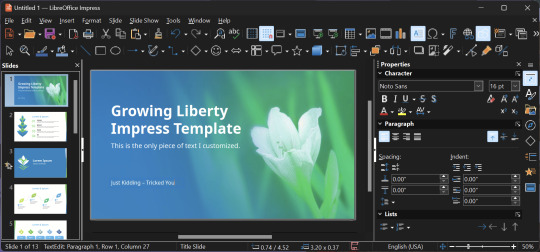
I can't say I've used it much myself yet. I do not personally like using office software except when I have to for school.
OpenShot
OpenShot Video Editor is, as the name suggests, a video editing program. It has industry-standard features like splicing, layering, transitions, and greenscreen.
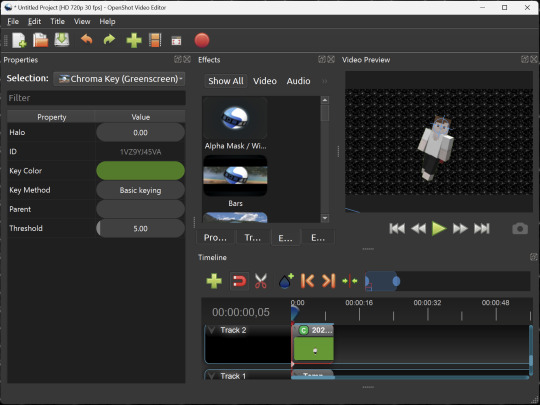
I've only made one video with it so far, but I'm already very happy with it. I had already paid for a video editor (Cyberlink PowerDirector Pro), but I needed to reinstall it and I didn't remember how. Out of desperation, I searched up "FOSS video editor" and I'm so glad I did. There's no launcher, there's no promotion of other apps and asset packs—it's just a video editor with a normal installer.
GIMP
GNU Image Manipulation Program is an image editor, much like Photoshop. Originally created for Linux but also available for Windows and MacOS, it provides plenty of functionality for editing images. It is a bit unintuitive to learn at first, though.

I've used it to create and modify images for years, including logos, really bad traceover art, and Minecraft textures. It doesn't have certain advanced tech like AI paint-in, but it has served my purposes well and it might just work for yours!
(Be sure to go to Windows > Dockable Dialogs > Colors. I have no idea why that's not enabled by default.)
Audacity
Audacity is an audio editing program. It can record, load, splice, and layer audio files and apply effects to them.
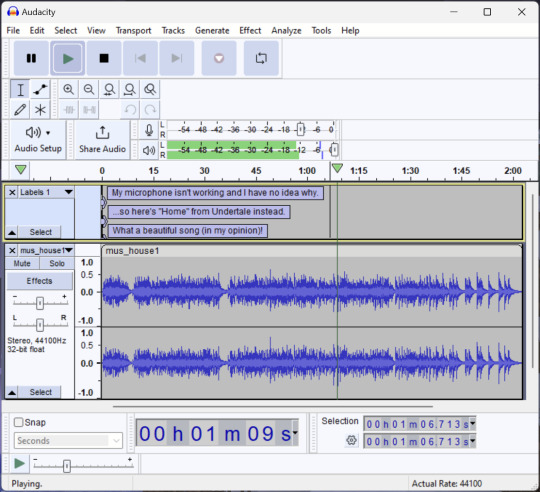
Audacity is another program I've used for a long time. It is not designed to compose music, but it is great for podcasts, simple edits, and loading legacy MS Paint to hear cool noises.
7-Zip
7-Zip is a file manager and archive tool. It supports many archive types including ZIP, RAR, TAR, and its own format, 7Z. It can view and modify the contents of archives, encrypt and decrypt archives, and all that good stuff.

Personally, I use 7-Zip to look inside JAR files for Minecraft reasons. I must admit that its UI is ugly.
Firefox
Firefox is an internet browser, much like Google Chrome, Microsoft Edge, or Safari. While browsers are free, many of them include tracking or other anti-consumer practices. For example, Google plans to release an update to Chromium (the base that most browsers are built from these days) that makes ad blockers less effective by removing the APIs they currently rely on.
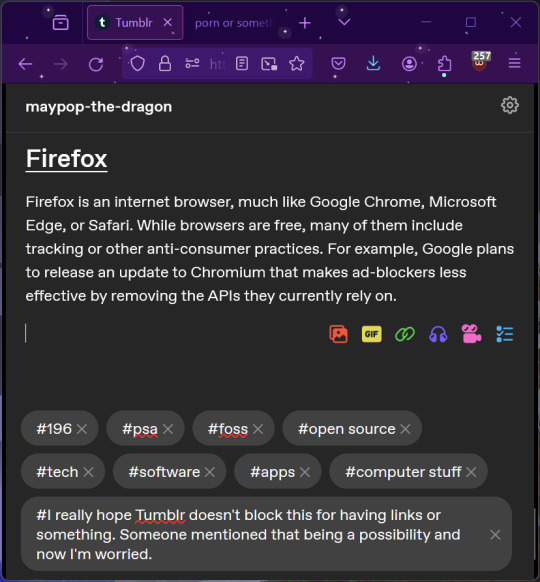
Aside from fighting monopolies, benefits include: support for animated themes (the one in the picture is Purple Night Theme), good ad blockers forever, an (albeit hidden) compact UI option (available on about:config), and a cute fox icon.
uBlock Origin
As far as I know, uBlock Origin is one of the best ad blockers there is.
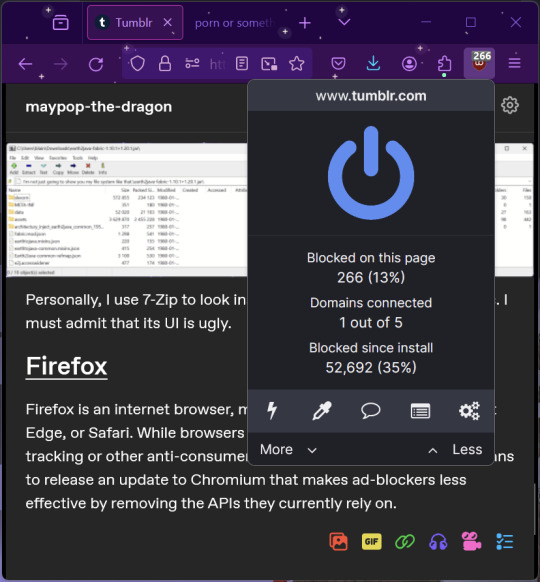
I was on a sketchy website with my brother, and he was using Opera GX's ad blocker. Much of the time when he clicked on anything, it would take us to a random sponsored page. I suggested that he try uBlock Origin, and with uBlock Origin, that didn't happen anymore.
Linux
Linux is a kernel, but the term is often used to refer to operating systems (much like Windows or MacOS) built on it. There are many different Linux-based operating systems (or "distros") to choose from, but apps made for Linux usually work on most popular distros. You can also use many normally Windows-only apps on Linux through compatibility layers like WINE.
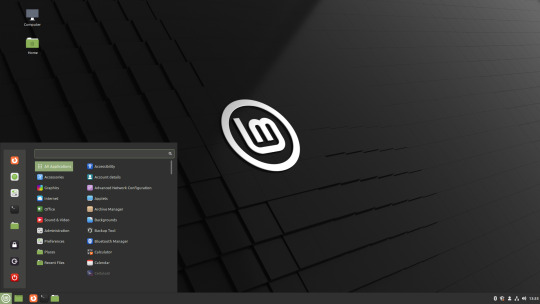
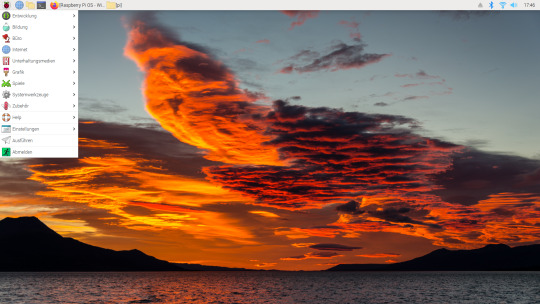
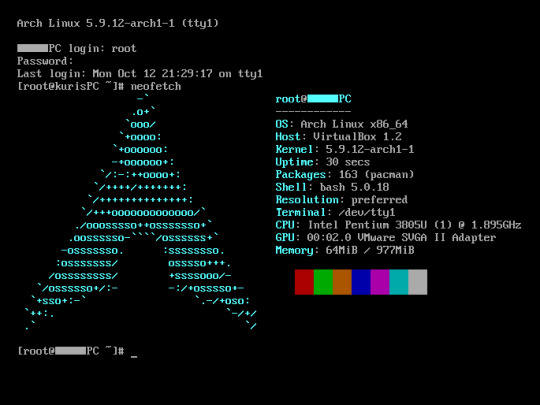
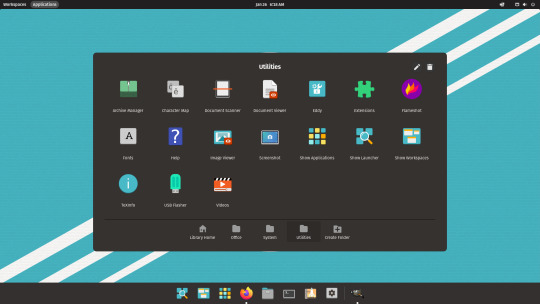
I don't have all four of these, so the images are from Wikipedia. I tried to show a variety of Linux distros made for different kinds of users.
If you want to replace your operating system, I recommend being very careful because you can end up breaking things. Many computer manufacturers don't care about supporting Linux, meaning that things may not work (Nvidia graphic cards notoriously have issues on Linux, for example).
Personally, I tried installing Pop!_OS on a laptop, and the sound output mysteriously doesn't work. I may try switching to Arch Linux, since it is extremely customizable and I might be able to experiment until I find a configuration where the audio works.
Many Linux distros offer "Live USB" functionality, which works as both a demo and an installer. You should thoroughly test your distro on a Live USB session before you actually install it to be absolutely sure that everything works. Even if it seems fine, you should probably look into dual-booting with your existing operating system, just in case you need it for some reason.
Happy computering!
#196#psa#foss#open source#tech#software#apps#computer stuff#I really hope Tumblr doesn't block this for having links or something. Someone mentioned that being a possibility and now I'm worried.#please reblog#2024-01-26
47 notes
·
View notes
Text
Novel Planning/Writing Programs/Sites
I wrote this mostly for myself as I've used many different things over the years with varying success, but I think it might be useful for others as well. Not sponsored. All below the cut. If you want the TLDR, scroll to the very bottom.
1. Google Docs
Free. Just regular ol' Google Docs for writing and organizing. If you lose a Doc, you can contact Google and they're pretty prompt about getting it back for you if you accidentally delete something and then empty your trash.
For writing, it helps to get one folder and then have a bunch of folders inside that folder for drafts. It also helps to make one Doc that's just for background information you might need or for outlining. For this, I've just made tables or used Google's built-in outlines. However, this is the model of an eleven year old and it can get pretty messy trying to keep track of too much.
2. Airtable
Free with paid version available. Not for writing, but good for organizing. There's a novel template as well. I like that you can link records together. I've been using it for awhile for things like species, scenes, locations, etc.
For family trees, I recommend changing the view from "Grid view" to "Kanban" and categorizing it by "Generation" (Gen 1, etc). This works really well for planning things out and world building in general. You can add images really easily as well. It's very user intuitive and I recommend playing around with categories and fields until you get it to your liking. Btw, if you sign up with the above link I get referral credit on the site! I'd appreciate it if this post proves helpful.
3. Notebook.ai
Free with paid version available. This is one of those programs that's technically free, but you need to pay for it to be really usable in some respects. I really like how it organizes characters and asks you questions that prompt you to think more about your character. Same with locations. So it's great for characters and locations, but not for stuff like species or races. If you want to write fantasy, I would not use this alone (but I would take a look to see if any of the questions help you with world-building or characterization). I'd use it in conjunction with something like Airtable.
4. novelWriter
Free. This offline software is great for novel-writing! You can move chapters around which is nice. It has all your work in this nice lil' collapsable list. It also has options for you to note stuff about the plot, characters, location, etc at the bottom. Not super user intuitive, but it's not very hard to figure out and their site can help you out. Also, the next several are very similar to novelWriter (similar features and are not browser-based), but with more features.
5. Manuskript
Free. Same as above, but it includes an analyzer that can tell you how often you used a word or phrase. It also has some neat features like a distraction-free mode you can customize and a novel assistant–though I have not used that feature. The devs recommend having backups because it's still in early development. However, you should have backups regardless. I’ve personally had some issues losing progress and my .msk file not loading completely within the program. I’m trying to play around and find a solution, but I might lose motivation since I haven’t had this issue with Quoll or novelWriter.
6. Quoll Writer
Free. Great for novel writing. It also has bonus features like a fullscreen distraction free mode you can configure and a guide meant to identify problems with your writing. You can easily do text annotations as well. It has stats to view your productivity AND an editor mode that includes sharing with others. There is also a warm-up feature that comes complete with writing prompts, though I’ve never used this feature.
7. Atomic Scribbler a.k.a SmartEdit Writer
Free. Great for novel writing, especially if you're super used to Microsoft Word. It has the same look and feel, so if you're considering transitioning, this is a great fit. Just like the ones above, it lets you go chapter by chapter and scene by scene so you can easily view your novel and rearrange it to your liking. Disclaimer that I have not used this because I hate Microsoft Word so much it's unreal.
8. yWriter
Free. yWriter seems pretty similar to novelWriter, but is only for Windows. I have Mac, so I haven’t tried this one but it looks nice and uncomplicated.
9. NovelEasy
Free. Browser-based, so you can use this if you have a ChromeBook (4-8 require Mac or Windows to run). It has a similar set up and some similar features, but it goes by chapters, not chapters and scenes. However, it does still have the option to see your daily progress with word count, time spent writing, etc. Disclaimer that I have not used this, but it looks like a good alternative if you can't run the aforementioned programs.
I haven't tried Scrivener (since it's paid), but I've heard good things about it. I'm not sure if there's anything included you couldn't get elsewhere for free. Campfire is free, but I'm unsure if it's free like Airtable or like Notebook. If I check it out, I'll update this post with my thoughts on it.
TLDR: What I’ve been using to write is Airtable (#2 on the list) for worldbuilding, characters, and outlining, Google Docs (#1) for at least the first draft, and novelWriter (#4) for the second draft onward since it’s so much easier to move scenes around and see what else you need to edit.
19 notes
·
View notes